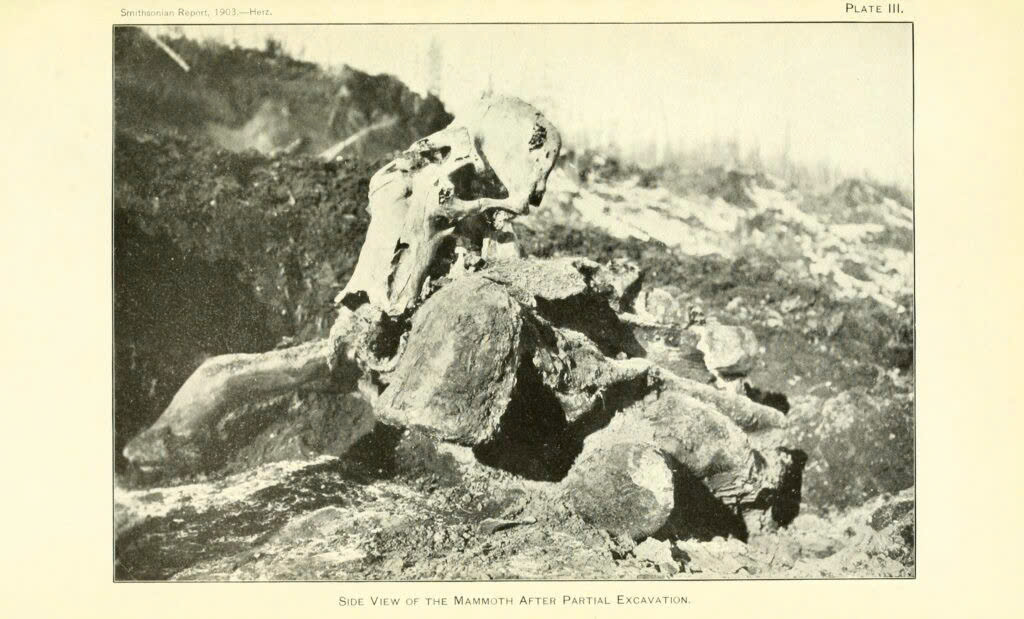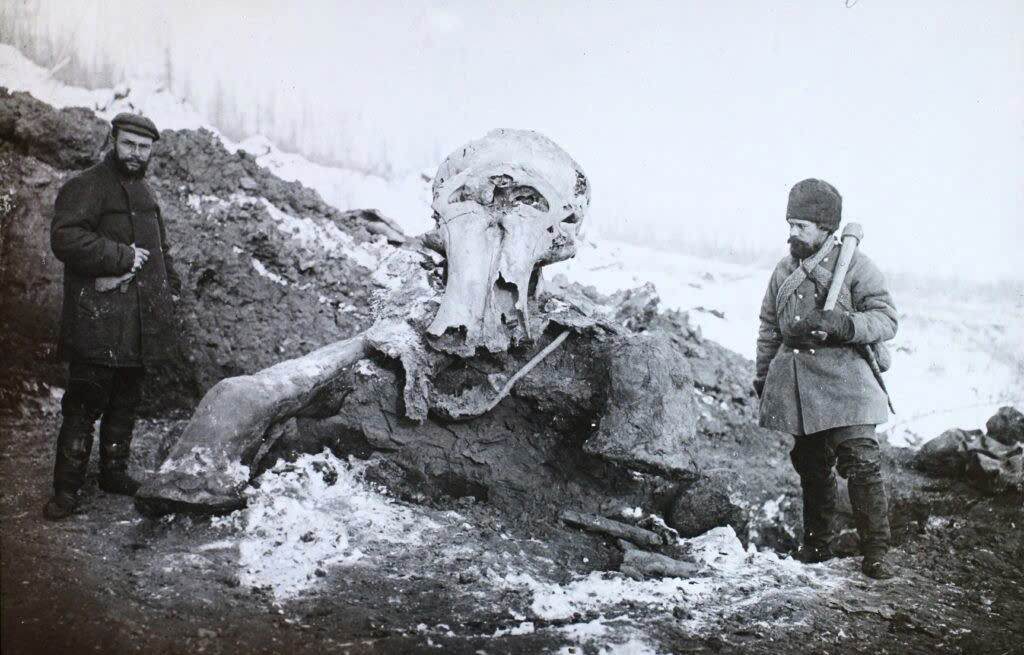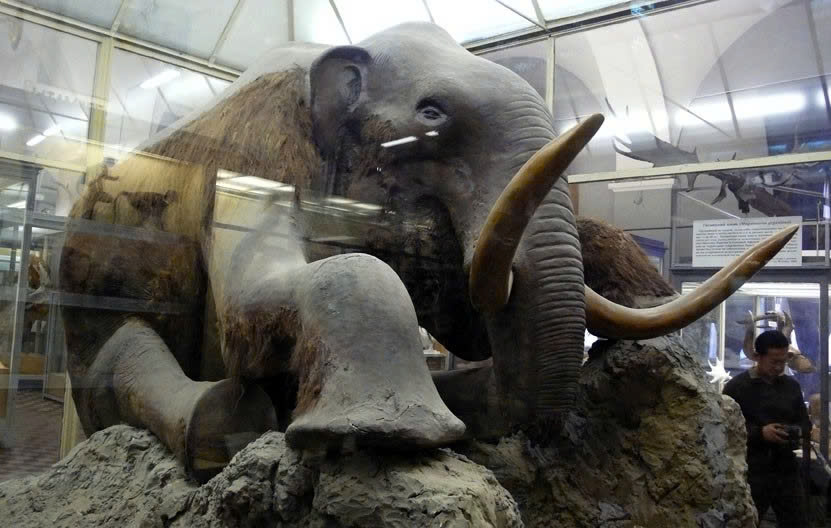Deep in the frozen wilderness of Siberia lies one of archaeology’s most perplexing discoveries – a woolly mammoth so perfectly preserved that it still held flowers between its teeth after 44 millennia. The story of the Beresovka Mammoth is not just a tale of ancient life, but a scientific mystery that continues to challenge our understanding of prehistoric catastrophes.
A Chance Discovery in the Siberian Wilderness
The Fateful Summer of 1900
During the brief Siberian summer of 1900, a group of local hunters was traversing the banks of the remote Berezovka River when they stumbled upon something extraordinary. Protruding from the thawing permafrost were unmistakable signs of an ancient giant – thick fur and massive bones that would soon reveal themselves as belonging to a woolly mammoth.

What made this discovery truly remarkable wasn’t just the mammoth’s age of approximately 44,000 years, but its unprecedented state of preservation. The massive creature, weighing nearly six tons, sat in an almost upright position, as if it had simply paused for a moment before being frozen in time.
An Unusual Scene Preserved
The hunters were amazed to find delicate buttercups still clutched in the mammoth’s mouth, while its stomach contained an astounding 30 pounds of undigested vegetation. The presence of fresh plant material suggested the animal had been feeding normally when disaster struck, yet its broken pelvis and fractured ribs told a story of sudden trauma.
Word of this extraordinary find quickly spread, eventually reaching the scientific community in St. Petersburg, where researchers recognized the significance of such exceptional preservation.
The Scientific Expedition
Racing Against Time
In 1901, the Russian Academy of Sciences dispatched a team led by Otto Herz and Eugene Pfizenmayer to retrieve this prehistoric treasure. Their journey was arduous, requiring thousands of miles of travel by sled through harsh Siberian terrain, racing against the approaching summer thaw that could destroy their prize.

Upon arrival, the expedition team found a bittersweet scene. While the mammoth’s head had begun to decompose in the brief summer warmth, its trunk still held those remarkable buttercups, and its stomach remained packed with identifiable plant species including sedges, foxtail grass, and wildflowers.
Meticulous Recovery
The excavation process was painstaking. Scientists carefully cut through layers of ice and permafrost, documenting every detail of the mammoth’s position and condition. The evidence suggested the animal had suffered a catastrophic fall, becoming trapped in what would become its icy tomb.
The recovered remains were transported to St. Petersburg’s Zoological Museum, where they continue to provide invaluable scientific data to this day.
Life in the Ancient Mammoth Steppe
A World Unlike Today
The Beresovka Mammoth lived during a time when Siberia bore little resemblance to today’s barren tundra. Instead, vast grasslands known as the Mammoth Steppe stretched across the region, supporting diverse ecosystems teeming with life. Herds of bison, wolves, and other Ice Age fauna roamed these fertile plains under relatively mild conditions.
The Final Meal
Analysis of the mammoth’s stomach contents paints a vivid picture of its final day. The 30 pounds of undigested plant material, dominated by summer vegetation, indicates the animal died during the warmer months while actively foraging. This young adult mammoth, approximately 30 years old, possessed strong teeth and thick fur – adaptations that had served it well through countless seasonal changes.
The diversity of plant species found in its digestive system reveals a rich, temperate environment that supported abundant vegetation – a stark contrast to the frozen wasteland where it was discovered.
The Mystery of Instantaneous Preservation
A Race Against Decay
The central puzzle surrounding the Beresovka Mammoth lies in the speed of its preservation. Scientists theorize that the animal must have frozen solid within approximately 10 hours of death to maintain such extraordinary condition over 44,000 years. This hypothesis stems from studies of tissue decomposition rates in permafrost environments.
The evidence of trauma – broken bones, blood in the lungs, and the creature’s trapped position – suggests it fell into a depression and suffocated. Yet the preservation of delicate organic matter like buttercups requires conditions that seem almost impossible to achieve naturally.
Competing Theories
Several hypotheses attempt to explain this rapid freeze, each with compelling elements but none entirely conclusive:
The Mudslide Theory: The most widely accepted explanation suggests a catastrophic landslide of frigid, wet earth buried the mammoth instantly, creating an impermeable seal that prevented decay while the extreme cold preserved tissues.
Volcanic Catastrophe: Some researchers propose that a volcanic eruption could have blanketed the region with ash and snow, creating sudden freezing conditions. However, geological evidence for such an event during the relevant time period remains elusive.
Extreme Weather Event: Early theories suggested a sudden temperature plunge to extraordinary lows, but this conflicts with the presence of temperate vegetation and lacks supporting climatic evidence.
Scientific Legacy and Ongoing Research
Unlocking Ancient Secrets

The Beresovka Mammoth has become far more than a museum curiosity. Its remarkably preserved tissues have enabled groundbreaking DNA research, providing insights into mammoth genetics and their relationship to modern elephants. The detailed analysis of its stomach contents continues to inform our understanding of Ice Age climates and ecosystems.
Climate Time Capsule
Each plant fragment and tissue sample serves as a window into prehistoric environmental conditions. Researchers use this data to reconstruct ancient climate patterns and understand the dramatic environmental changes that led to the mammoth’s eventual extinction.
The specimen challenges existing theories about gradual climate change during the Ice Age, suggesting that catastrophic events may have played a larger role in shaping prehistoric ecosystems than previously thought.
Video
The Enduring Enigma
Questions That Persist
Despite more than a century of study, the Beresovka Mammoth continues to pose fundamental questions about our planet’s prehistoric past. How exactly did such rapid preservation occur? What type of catastrophic event could freeze a six-ton animal so quickly that delicate flowers remained intact in its mouth?
Could this exceptional preservation indicate a larger pattern of sudden environmental shifts during the Ice Age? The answers to these questions could reshape our understanding of how quickly dramatic changes can occur in Earth’s climate systems.
A Symbol of Scientific Wonder

The Beresovka Mammoth stands as a testament to the power of scientific curiosity and the importance of preserving our planet’s natural history. Its story reminds us that even after decades of research, nature still holds secrets waiting to be unlocked.
As new technologies emerge and our analytical capabilities advance, this ancient giant continues to yield fresh insights, ensuring that the mystery of its remarkable preservation will captivate researchers and the public for generations to come.
The buttercups in its mouth serve as a poignant reminder that life can be preserved in the most unexpected ways, creating bridges across time that allow us to touch the distant past and better understand the world we inhabit today.

